*Keyboardkraze now has a nearly 24/7 chat service directly with me should you have any questions regarding keyboard/plugin choices! This is connected directly to me and it is not AI.
Table of Contents
The Casio PX-S7000 recently hit the market, and I was fortunate enough to get my hands on it. After two weeks of playing it daily and comparing it with digital pianos, I now have my full thoughts. In this Casio PX-S7000 review, I will explain how it fared against others near its price point and give you my honest opinion.
If you follow my reviews, you will know that I feature the Roland FP-90X as my top pick for compact digital pianos. In this article, I will compare the PX-S7000 with the FP-90X.
You will be surprised by where the PX-S7000 ranks amongst the industry’s hardest hitters.
The PX-S7000 is a gamechanger for Casio, aligning them with the high-end digital piano giants such as Roland. The PX-S7000 offers a great key-bed, solid speakers, sweet aesthetic, and beautiful piano samples to give you an incredible experience.
Pros
- Impressive new key-bed (Smart hybrid hammer action)
- 400 onboard sounds
- Powerful piano sounds, as well as electric pianos
- Slick navigation
- Best aesthetic near its price point
- Heavy-duty yet lightweight keyboard stand
- Arpeggiator (50 rhythms) – this is fun to play with
- Three different colors to pick from (Harmonius Mustard, White, Black)
- It Includes three piano pedals
- Pitch Bend
- Includes WU-BT10 Bluetooth Audio & MIDI adapter
- Dual headphone outputs plus 1/4″ L/R outputs and expression pedal input
- MIDI capable
- Optional battery power (8XAA)
- Has Casio Music Space app)
- Hammer response: 10 levels, off
- Split/layer
- 256 note polyphony
- Soundscape/design in the Casio app
- Tweak your sounds in the Casio app
- Includes key cover
Cons
- It took about two hours to install correctly (I’m not the best with manuals)
Casio PX S7000 Overview

This review was written after I had spent several weeks with the PX S700. Not only does it encourage competitors to beat its design, it always plays well and has some excellent speakers.
The PX-S7000 has earned its top 3 place amongst the best digital pianos in 2024.
I was worried that the Casio samples on this keyboard would not be as high quality as the other keyboards I mentioned.
In recent years, Casio has had some pretty successful beginner digital pianos, so I became intrigued when I saw they had the PX S7000, which targets the high-end market.
Tech Specs
- Keys: Hybrid wood
- Weight Of Key-bed: Medium weight – Lighter than Roland’s, heavier than Korg
- Touch sensitivity: 5 x levels – I typically don’t mess with touch sensitivity on any digital piano, but some people do
- Presets: 400 different tones
- Polyphony: 256 notes
- Reverb (8)
- Storage: USB Memory, Internal Flash
- USB:1 x Type B, 1 x Type A
- Bluetooth WU-BT10 adapter included)
- Headphones:1 x 1/8″ TRS, 1 x 1/4″ TRS
- Speakers 4 x 6.29″ x 3.14″ – Impressive quality, fills the room
- Amplifier:2 x 8W
- Height:4.01″
- Width:52.75″
- Depth:9.52″
- Weight:32.62 lbs.
- Pedals: Includes three-pedal unit
- LCD Screen? Yes
- Piano Sound Engine: AIR w/10 adjustments
- Acoustic Pianos: Three grand pianos (each has two variations, totaling 9)
- Alternative Piano Sounds: 19
- Electric Pianos: 50
- Mic Input: Yes
- Navigation: LED navigation via touch or knobs
- Pitch modulation wheel: Yes
Design/Variations
My initial thoughts before getting it shipped were that I was worried it would take up too much space with a bulky stand. However, it pleasantly surprised me as it’s not bulky at all.
The PX-S7000 is about as fresh as it gets for a digital piano. It comes with three different designs, all with their own life and character.
Black

The black PX-S7000 is my favorite and the one I happen to own. I love the glossy black finish and how it goes with the wood-stained stand.
It stands out in my apartment and pops with the timber wood and white walls surrounding it. From the outside of my place, this thing looks like an incredible instrument and one that I’m proud to showcase.
*The pedal unit is black
White
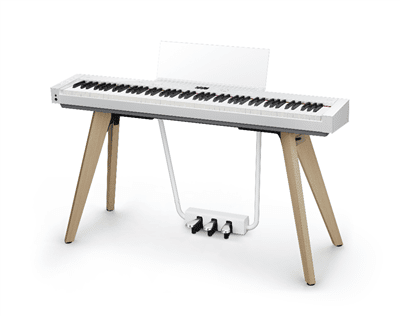
This version pops in basically any room setting it is placed. I typically go for darker-style/colored keyboards, but this looks awesome.
*The pedal unit is white
Harmonious Mustard

I had trouble deciding between this and the black PX-S7000. While they’re entirely different, I was drawn to both.
The Harmonious Mustard is a statement piece that stands out amongst the crowd. If you’re someone who digs this, you will love how this looks in person.
*The pedal unit for this is Gold/mustard colored
The Build Process
Building the stand for this was quite the endeavor it didn’t need to be. I chalk this up to user error, as I am horrible with following directions for builds.
What’s great about this keyboard is that it fits all of my keyboard stands should I want to switch it up and go a more portable route, as it only weighs about 30 lbs.
That being said, the custom stands it comes with makes this keyboard look pretty neat. It’s also highly durable and can hold my body weight.
In terms of build time, if you sort all the parts out and go step by step, you can build this in under an hour. It took me a little bit longer, but I also misplaced a couple of pieces and was multitasking.
Keys/Action
The keys of the PX-S7000 surprised me. I’m used to playing on high-end Roland keyboards in which the action is heavier (which I prefer). That being said, the keys play exceptionally well and feel pleasant to the touch.
If you think Roland’s key beds are too heavy, you will likely love the PX-S7000 key bed. It’s in the middle regarding weight, but the action is what I enjoy.
I can play dynamically when playing classical pieces without realizing I’m playing on a keyboard, not a piano.
For the keys, Casio went with a brand new style called the Hybrid hammer action, which consists of a spruce siding to the keys.
I enjoy how these play and feel to touch. Compare it to a regular piano in which the keys are lighter the higher the register you go.
Let’s compare the PX-S7000 to some other great keyboards.
When I compare it with the Korg Nautilus, I prefer the Casio PX-S7000 for touch, weight, and action.
Overall, the action and keys are a giant step forward for Casio, and the PX-S7000 pushes the limit for other manufacturers.
Noteworthy: I have played most every high-end digital piano, and the piano action of the PX-S7000 competes with the best of the best.
Speakers
When looking at the Privia PX-S7000, I was curious how it would sound. I was surprised at how it sounded when I had it at about 30 percent total volume.
I live in a 2,200-square-foot apartment with tall ceilings. Instead of focusing on the numbers and wattage of the speakers, it fills the room at about 75 percent volume.
When I bring it up over 75 percent, the sound quality is still there, and I am impressed by the higher register notes. They don’t sound too brittle or thin.
Low-end was also there, with the notes being audible even when getting towards the lowest notes on the keyboard.
You can easily adjust frequencies as well on the board to your liking.
The PX-S7000 is equipped with four speakers, with all speakers having 6.29″ x 3.14.
I like what Casio did here with the speaker system, as they are all the same wattage. I’m used to seeing digital pianos with tweeters, which this one doesn’t.
Two speakers have side gain, making this keyboard sound fuller.
The speakers are not as loud as the Roland FP-90x, but they sounded just as good, if not better. *I was expecting the Roland FP90x to destroy.
It is also equipped with two amplifiers that are 8 watts each.
Acoustic Simulator
The acoustic simulator for the PX-S7000 is one of the selling points. The ability to edit parameters and tweak your sound to your liking is a win. It’s also easy to edit sounds.
I tweaked the main piano and got an incredible sound that I used for a new song idea.
Portability
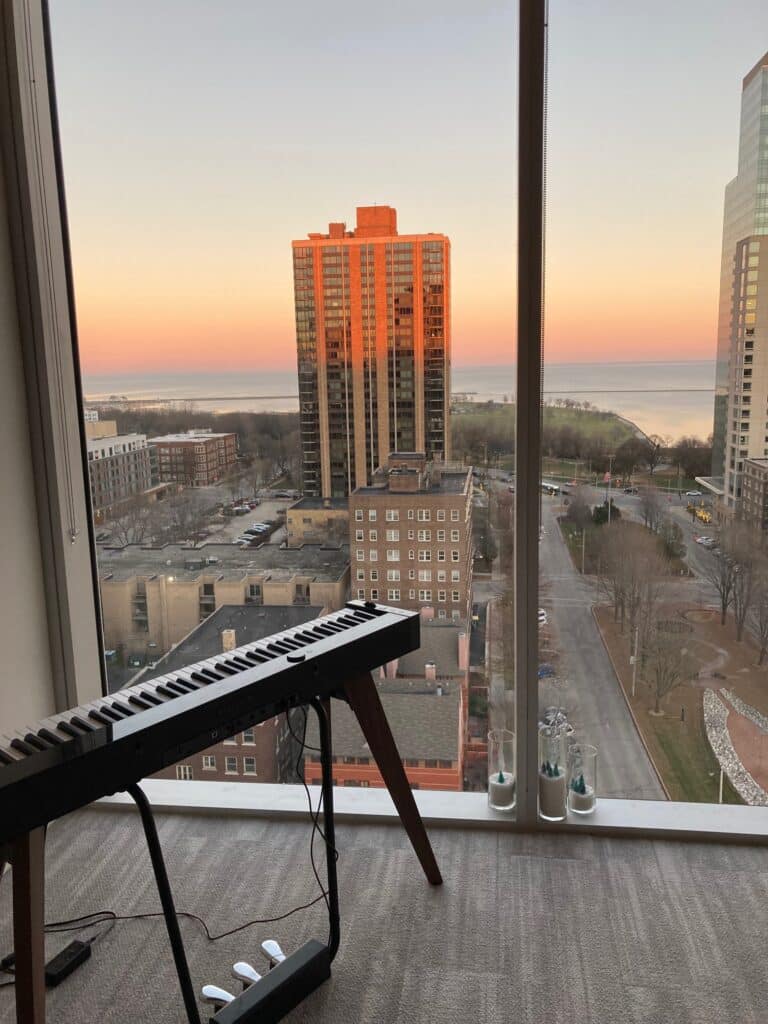
Weighing 32 lbs, the PX-S7000 is highly portable. With this being said, it does have a stand that it comes with, which it locks into place.
One thing to note is that you can keep it in place if you like to move your keyboard from room to room.
Another note is that the keyboard fits with all keyboard stands.
Effects
The onboard effects with this keyboard are on point. There’s nothing crazy, but everything you need, including some solid reverb and brilliance effects.
The PX-S7000 boasts the following:
- 8 x Reverb
- 8x hall simulators
- 12 chorus
Sounds
I will be releasing a whole video on the sounds, as there were several patches that I thoroughly enjoyed. However, my favorite piano sound is the PriviaGR HG MLw. Throw a little reverb on this baby, and it sounds incredible.
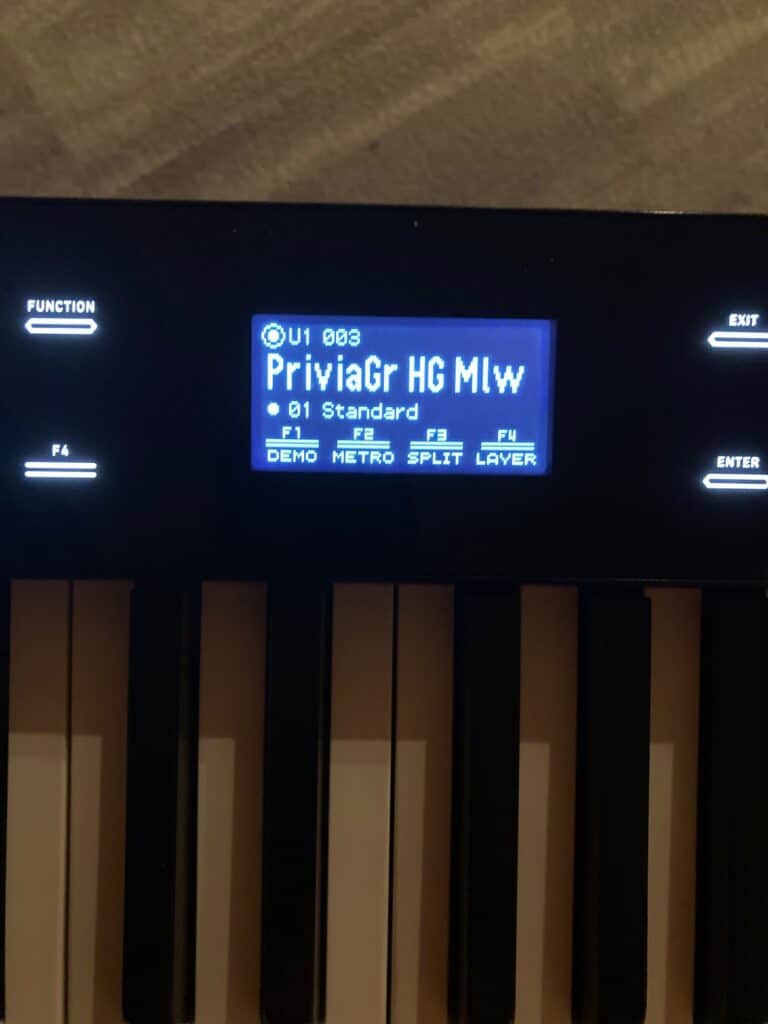
All in all, the piano sounds of the PXS7000 trumped the FP90x. I think there seems to be a little more life in the PXS7000 sounds.
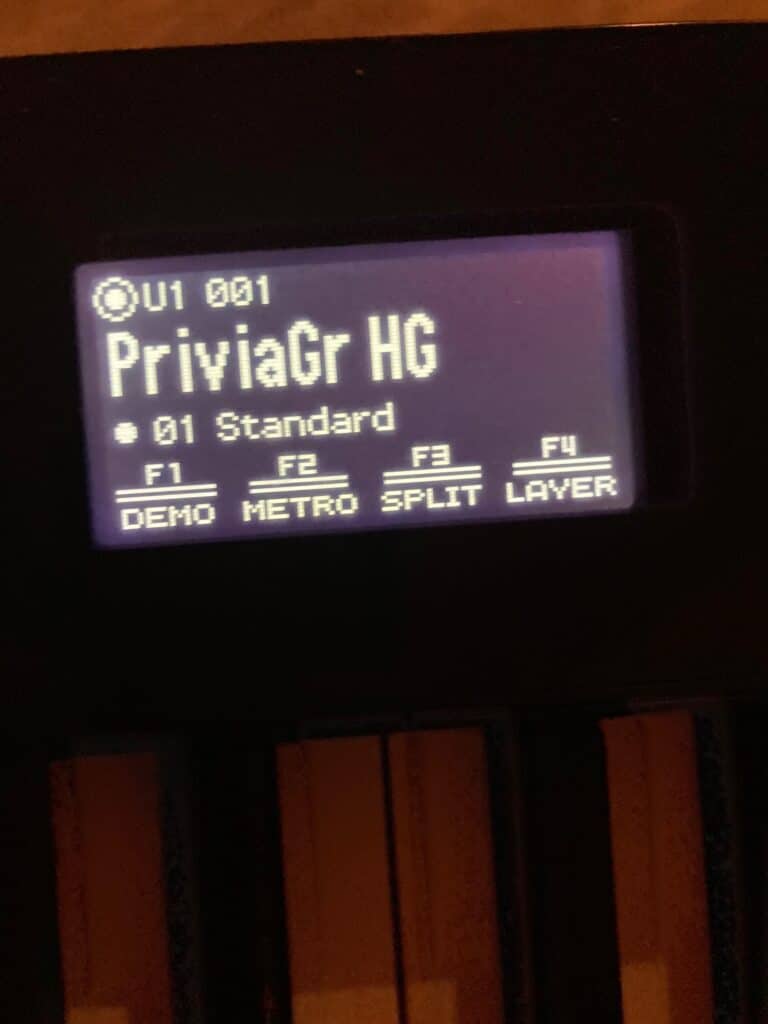
Disclosure: I am a diehard Roland piano fan
My favorite electric piano sound is the Flying Butter EP. I wrote about ten different ideas in an hour with this specific sound.
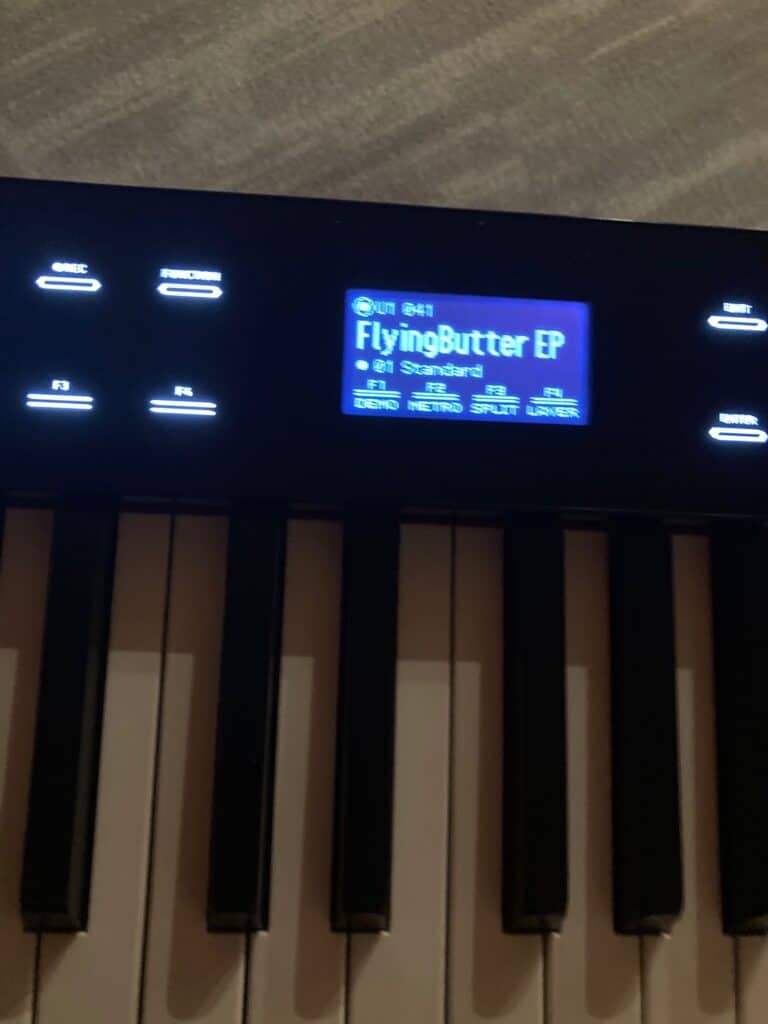
Another favorite was the Rotary V-org. This thing has a ton of character and is beautiful.
Lastly, my favorite guitar tone from this beast is the crunch jazz guitar. It’s perfect for laying down chords to a beat for something like lo-fi.
VS The Roland FP 90X
The PX-S7000 100% matches up against the Roland FP 90x. This is a win, as the FP 90X is an incredible machine that I speak highly of.
The PX-S7000 shines because it’s lighter, has better-sounding speakers, more sounds, and more realistic piano sounds, and it also comes with a beautiful stand/3-pedal unit.
I recommend the PX-S7000 to pianists who value having a beautiful instrument for their home that also plays exceptionally well.
The FP-X90 is also a fantastic choice, but I recommend this more for those looking to play gigs. The comparison of the PX-S7000 mainly draws from the price points, as the two are pretty different in purpose.
Vs The Korg Nautilus
These are entirely different keyboards, but I decided to compare them as I recently reviewed the Nautilus, a fantastic keyboard workstation.
The PX-S7000 plays better and has more comfortable keys. It also has a solid set of speakers, and the Nautilus requires an amp or monitors/headphones.
The main reason for the comparison was the key bed, which the PX-S7000 dominates.
Wrapping Up
The PX-S7000 is a gamechanger for Casio, aligning them with the high-end digital piano giants such as Roland. The PX-S7000 offers a great key-bed, solid speakers, sweet aesthetic, and beautiful piano samples to give you an incredible experience.
The main takeaway from this Casio PX-S7000 review is that Casio has now joined the heavy hitters of the high-end digital piano market.
This competes with the FP-90x and the Yamaha P-515 keyboards. However, it also does so in a unique and fun way, with a completely different, portable design.
If you’re looking for something classy, lightweight, has excellent piano sounds and solid speakers, check out the PX-S7000.



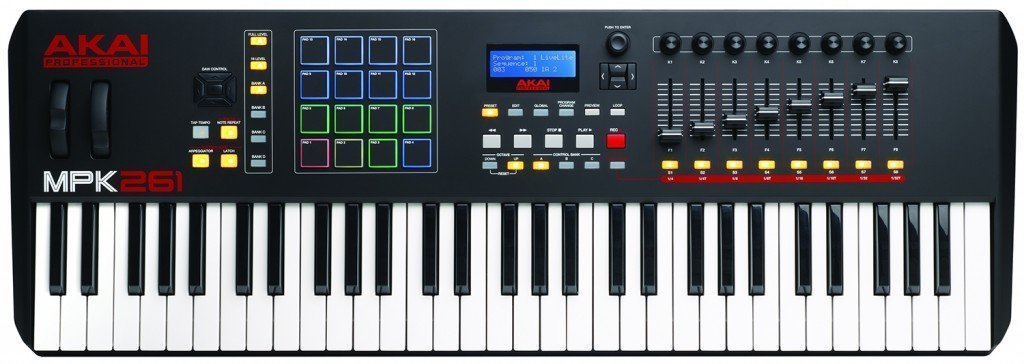



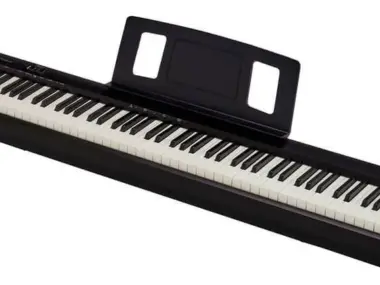
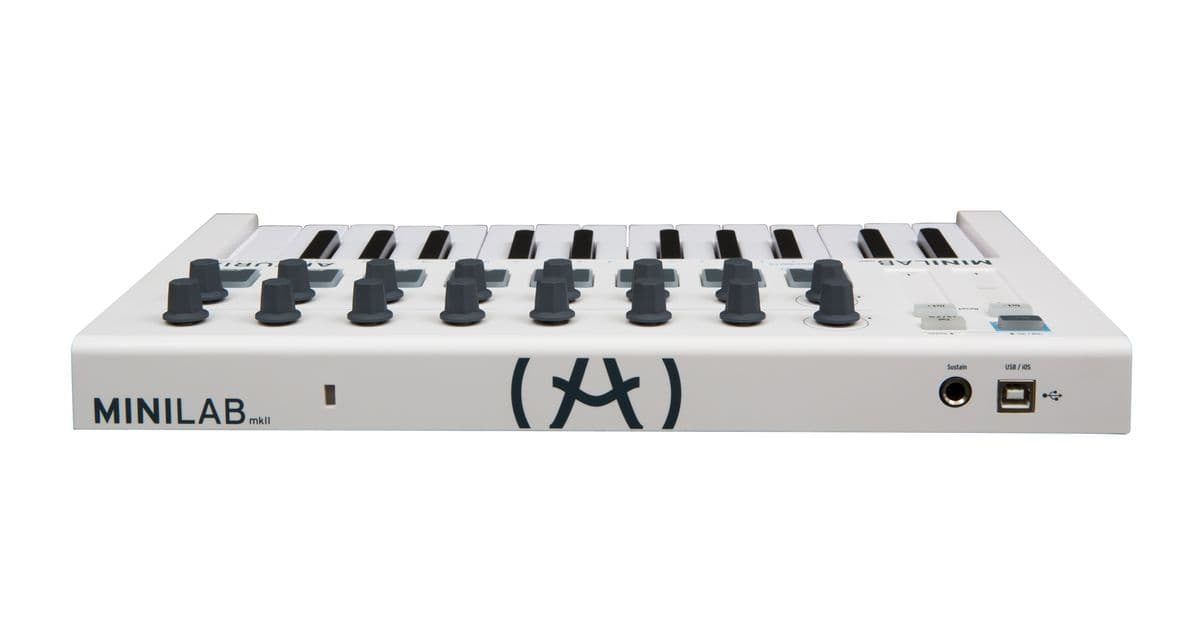
13 comments
Fared, not faired.
Otherwise, thanks for the review. I’ve been interested in digital pianos for a while now. I will look into the Casio a bit further.
Cameron,
Thanks for the note! This digital piano is definitely worth the look!
Hi,
I hope this is the appropriate place to ask a few general questions. Apologies if not, and feel free to notify and delete as applies.
I’m an aspiring player looking to buy (well, actually, lease) my first piano. The PX-S7000 is on my radar. My intention is to learn to play the piano whilst respecting the privacy of my family and neighbours, all without compromising on quality of play and compatibility with acoustic instruments. This leads to some questions.
A few pianists I know have mentioned in the past that you can always tell when someone has learned to play on a keyboard rather than a piano, especially when they’re playing a piano.
Is a digital piano such as this sufficiently close to an acoustic piano to eliminate this perceived difference, which is to say: ultimately deliver a player of comparable technique to those who have learned on an acoustic?
I’m thinking of things such as hammer action simulation, key feedback to the player, and the ability to play at – and by extension allow for learning the technique of – variable volumes per key (example: delicate arpeggiating on the right whilst laying a strong driving bass). Excuse my ignorance if I’m not explaining this right.
I hope you can enlighten me a little, as some blogs seem to be categorically against any digitalisation at all, and not all remarks seem to be simultaneously true across the blog board 😅
My eternal thanks in advance, of course.
Hi Bart,
Thanks for the question. My quick answer to this is that you typically hear pianists make that statement referring to non-weighted keyboards or keyboards with less than 88 keys. This keyboard is a fantastic instrument that plays very similar to an acoustic. While it’s not the exact same thing, learning on this keyboard is not going to make you develop bad technique in my professional opinion.
Hi Chris,
Apologies for the late reply, it seems there is no mail feedback system to let me know when someone has responded.
Thank you for confirming this. I have had the opportunity to spend some time with the instrument recently, but with zero piano skills, that doesn’t account for much. I very much liked what I saw and heard, though.
I believe I will proceed with my purchase soon, thanks in no small part to your extensive review and kind follow-up.
Kind regards,
Bart
Thanks for this great article. It definitely gave me the will to test it. 😊
Your black one is missing one leg in the second picture? 🙂
Would I get a more real piano feel than with my old px-860 or is the difference not that great?
Didn’t you get the Casio stool, same design as the stand? (I denmark none of the sellers have it on stock, I would have a px-s7000 if they did.)
The plus side also includes the App, BT and mic input. .Now only a aux input is missing, but I guess that I can use the mic input as an aux.
There is a great feel with the PX-S7000. There are a few piano sounds on this keyboard that are incredible.
How does it transpose???
Hi Emily,
Thanks for the comment!
You can manually transpose in the setting on the PX-S7000!
I bought the Casio Privia 1100 about two years ago. I bought it because I love the piano sound. I use it for gigging as I have a beautiful 7 foot ground at home. There is a couple things about the Casio Privia that I don’t like. First, it’s hard to change sounds mid-song as you have to hit two buttons simultaneously. Also, some of the sounds are quite shrill, such as Fender Rhodes, and electric piano sound up high. Do you know if The Casio 7000 could fix both of those issues? Il have to look into the transpose feature as that would be very cool when accompanying singers. Thank you for the review.
Hey Charles,
Thanks for the comment. I use the PXs7000 still daily when writing music. The EPs definitely sound great on the PXs7000, with a couple really being to my liking. In regards to changing sounds, they’ve definitely improved here as well. I personally use a MIDI controller for live performance in which I have my pads programmed to each sound per song, but take a look at this video as it breaks down organizing your sounds for live.
https://www.youtube.com/watch?v=Wqh9XwKf_bI